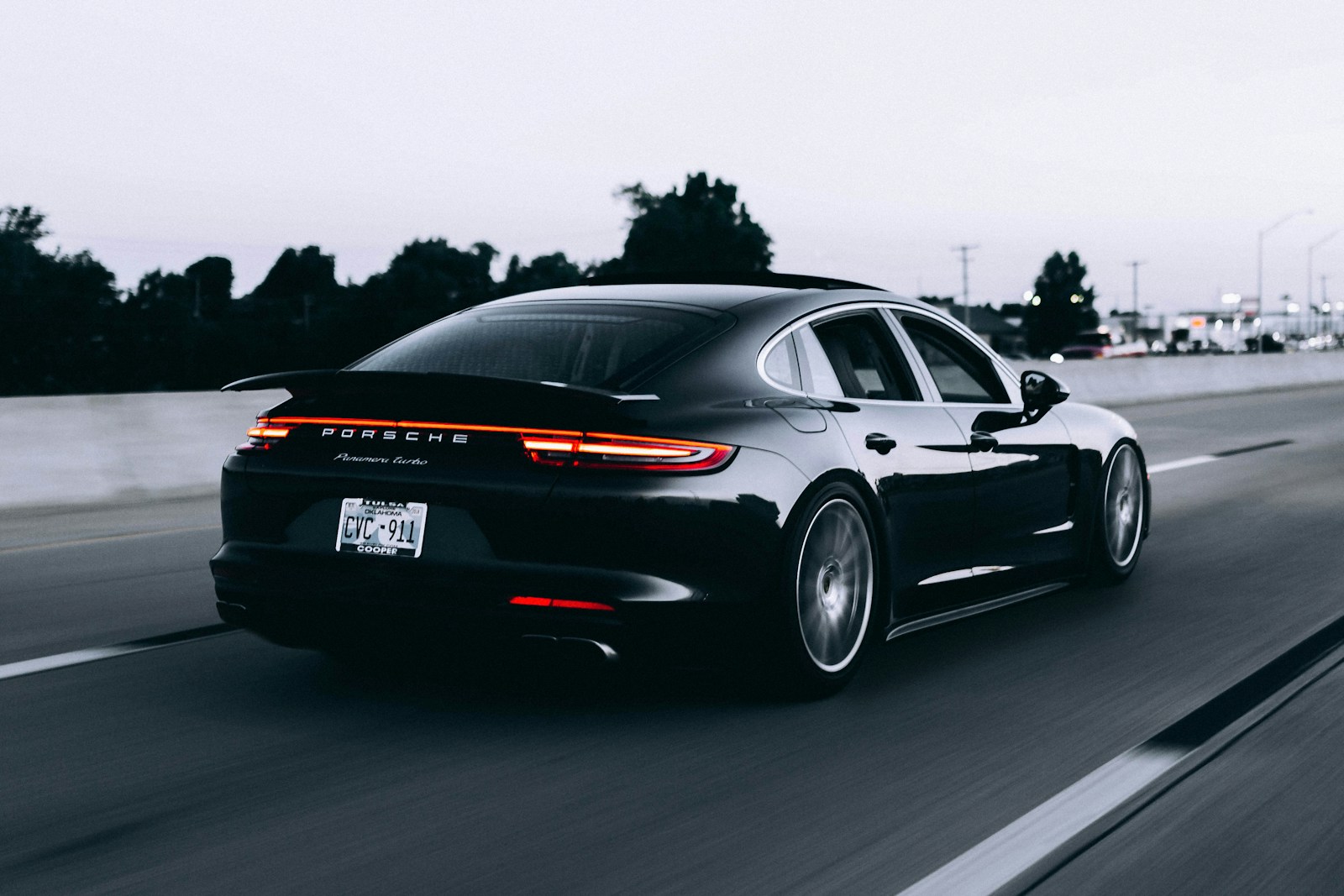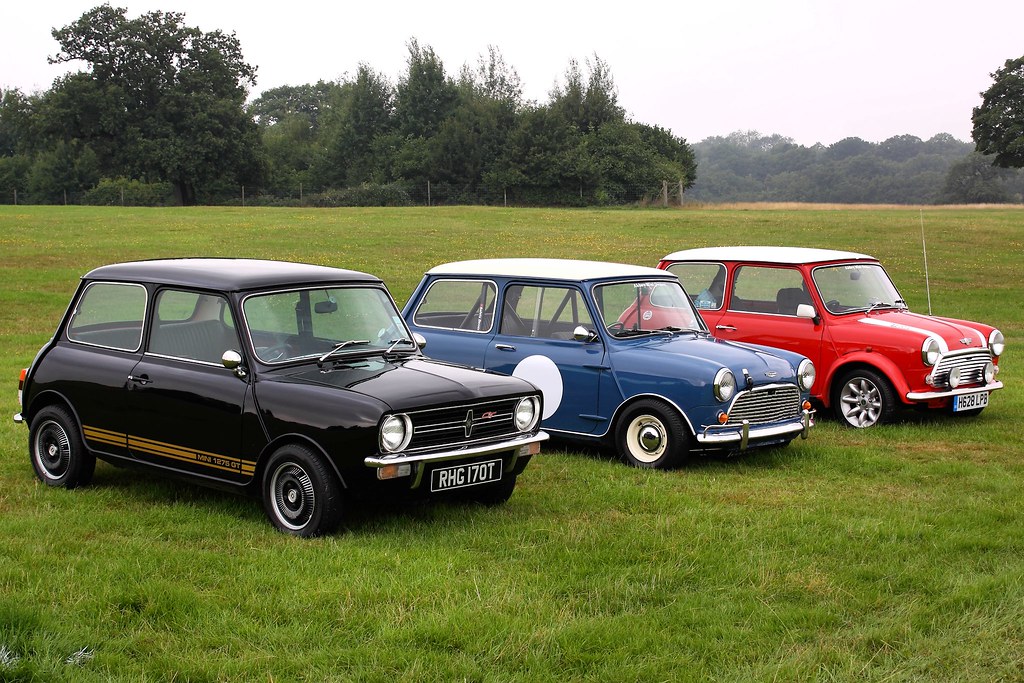
The allure of a classic car project is undeniably powerful, a siren song for automotive enthusiasts worldwide. It promises the thrill of breathing new life into a piece of history, the satisfaction of meticulously restoring every nut and bolt, and the eventual joy of cruising in a machine that once turned heads. Yet, as many seasoned mechanics and veteran restorers will attest, this dream often veers sharply into the territory of financial nightmares and endless frustration. Not every classic is destined for glory, and some, despite their initial promise or iconic status, become notorious for draining wallets and testing patience.
Indeed, the road to restoration is paved with good intentions, but also with rust, unobtainable parts, unreliable mechanics, and the harsh reality of diminishing returns. This isn’t merely about personal preference; it’s about the cold, hard facts of engineering missteps, production woes, and market indifference that plague certain models. While every car has its champions, there are some vehicles that, by universal consensus among those who truly understand the mechanics and economics of classic car ownership, are best appreciated from a safe, admiring distance, rather than with a wrench in hand.
In this in-depth analysis, drawing on deep industry knowledge and objective evaluations, we dive into the fascinating, albeit often frustrating, stories of twelve classic cars. These vehicles, once envisioned as groundbreaking or luxurious, ultimately proved to be disappointing projects for enthusiasts. We will explore their specific design flaws, performance shortcomings, and the unique challenges they present, offering well-researched insights into why some automotive dreams are better left on the drawing board or, perhaps, in the hands of someone else.

1. **DeLorean DMC-12**Perhaps no car embodies the bittersweet blend of ambition and failure quite like the DeLorean DMC-12. Immortalized by its starring role in the “Back to the Future” films, its real-world narrative was far less glamorous than its cinematic counterpart. Designed by the legendary Giorgetto Giugiaro, the car sported futuristic gull-wing doors and an innovative stainless steel body that made it an instant visual icon, promising a thrilling glimpse into the automotive future.
However, the DMC-12 notoriously failed to deliver on performance, a critical flaw for a sports car. Its underpowered 2.85-liter V6 engine simply couldn’t match the aggressive aesthetics, leaving drivers wanting more grunt under the hood. Beyond the lack of raw power, the vehicle was plagued by significant build quality issues, which severely hampered its appeal and reliability in the hands of early owners.
Further compounding its woes were the considerable financial troubles that enveloped the DeLorean Motor Company. Only about 9,000 units were produced between 1981 and 1983, a testament to its short and troubled lifespan. Despite the innovative stainless steel body being a unique feature, the DeLorean’s dream was over almost as quickly as it began, leaving a legacy of what-ifs and unfulfilled potential.
Ultimately, the company faced bankruptcy, and its founder, John DeLorean, became embroiled in a high-profile legal battle, further tarnishing the car’s already fragile reputation. While the DMC-12 holds a cherished, nostalgic place in pop culture, it remains a classic example of how ambitious visions, no matter how stylish, can falter disastrously when execution and fundamental performance fall short.
Car Model Information: 1981 Delorean DMC-12
Name: DMC DeLorean
Alt: 1983 DeLorean
Caption: 1983 DeLorean
Manufacturer: DeLorean Motor Company
Production: January 21, 1981 – December 1982
ModelYears: 1981–1983
Assembly: Dunmurry
Designer: Giorgetto Giugiaro
Class: Sports car
BodyStyle: coupé
Layout: Rear-engine, rear-wheel-drive layout
Doors: Gull-wing doors
Engine: 2.85 L
Abbr: on
Powerout: 130 hp
Transmission: 5-speed manual ,3-speed automatic
Wheelbase: 2413 mm
Length: 4267 mm
Width: 1988 mm
Height: 1140 mm
Weight: 1233 kg
Sp: us
Categories: 1980s cars, All Wikipedia articles written in American English, Articles with short description, Automobiles with backbone chassis, Automobiles with gull-wing doors
Summary: The DMC DeLorean is a rear-engine, two-seat sports car manufactured and marketed by John DeLorean’s DeLorean Motor Company (DMC) for the American market from 1981 until 1983—ultimately the only car brought to market by the fledgling company. The DeLorean is sometimes referred to by its internal DMC pre-production designation, DMC-12, although this was not used in sales or marketing materials for the production model.
Designed by Giorgetto Giugiaro, the DeLorean is noted for its gull-wing doors and brushed stainless-steel outer body panels, as well as its lack of power and performance. Though its production was short-lived, the DeLorean became widely known after it was featured as the time machine in the Back to the Future films.
With the first production car completed on January 21, 1981, the design incorporated numerous minor revisions to the hood, wheels and interior before production ended in late December 1982, shortly after DMC filed for bankruptcy and after total production reached an estimated 9,000 units.
Despite the car having a reputation for poor build quality and an unsatisfactory driving experience, the DeLorean continues to have a strong following, driven in part by the popularity of Back to the Future. 6,500 DeLoreans were estimated to still be on the road as of 2015.
Get more information about: DMC DeLorean
Buying a high-performing used car >>>
Brand: DeLorean Model: DMC-12
Price: $37,500 Mileage: 0 mi.
Read more about: Buyer’s Remorse: 15 Cars Drivers Wished They Never Bought
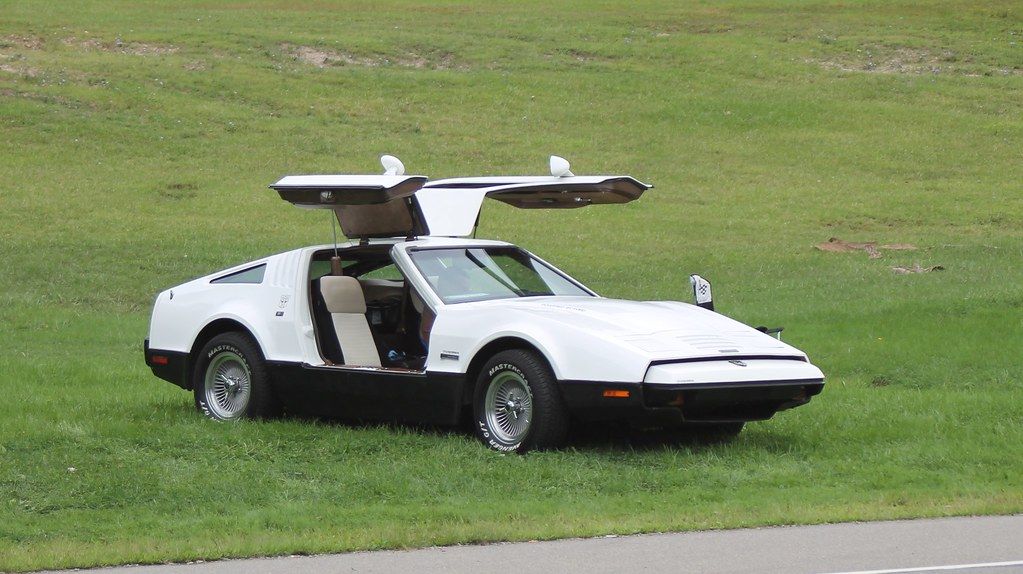
2. **Bricklin SV-1**The Bricklin SV-1 arrived on the scene touted as a revolutionary sports car, with its very name, “Safety Vehicle One,” proclaiming its primary focus. Conceived by Malcolm Bricklin, this car featured distinctive elements like gull-wing doors and a lightweight fiberglass body, aiming to push the boundaries of automotive design and occupant protection. It was an admirable goal, yet the execution proved to be its undoing.
The SV-1 was unfortunately plagued by a litany of production delays and severe quality control issues that marred its rollout. Furthermore, the vehicle suffered from a notable lack of power, especially with its initial AMC 360 V8 engine. While its integrated roll cage and impact-absorbing bumpers were genuinely ahead of their time in terms of safety innovation, these features inadvertently made the SV-1 too heavy and, consequently, too slow for a supposed sports car.
Only around 3,000 units were manufactured before the company ceased operations in 1976, marking a swift end to its ambitious run. The reliance on advanced safety features, while commendable, ultimately compromised the car’s performance and driveability, contributing to its commercial failure. Its electro-hydraulic gullwing doors, while visually striking, often impressed visually but trapped occupants when systems failed, adding to the list of practical issues.
Today, the Bricklin SV-1 stands as a stark cautionary tale in automotive history. It illustrates vividly how groundbreaking innovation, when not matched by meticulous execution and robust build quality, can lead to significant failure, leaving a legacy of unfulfilled promises rather than widespread success.
Car Model Information: 1975 Bricklin SV-1
Name: Bricklin SV-1
Manufacturer: Bricklin Canada Ltd.,General Vehicles Inc.
Production: 1974–1976
ModelYears: 1974–1976
Assembly: Saint John, New Brunswick
Designer: Marshall Hobart,Herb Grasse
Class: Sports car
BodyStyle: hatchback
Layout: Front-engine, rear-wheel-drive layout
Engine: ubl ,AMC V8 engine#360
Transmission: ubl
Wheelbase: cvt
Length: cvt
Width: cvt
Height: cvt
Weight: cvt
Sp: us
Doors: Gull-wing doors
Categories: All articles with unsourced statements, Articles with short description, Articles with unsourced statements from October 2025, Automobiles with gull-wing doors, CS1: long volume value
Summary: The Bricklin SV-1 is a two-seat sports car produced by American businessman Malcolm Bricklin and his manufacturing company from 1974 until early 1976. The car was noteworthy for its gull-wing doors and composite bodywork of color-impregnated acrylic resin bonded to fiberglass. Assembly took place in Saint John, New Brunswick, Canada. The name SV-1 is an abbreviation of “safety vehicle one”. Bricklin company literature uses both the SV-1 and SV1 formats. To promote the car’s safety bona fides, the company touted such features as its integrated roll-over structure and energy-absorbing bumpers.
Get more information about: Bricklin SV-1
Buying a high-performing used car >>>
Brand: Bricklin Model: SV-1
Price: $36,485 Mileage: 34,002 mi.
Read more about: The ’80s Conundrum: 14 Iconic Automotive Brands That Major Manufacturers Ultimately Let Go
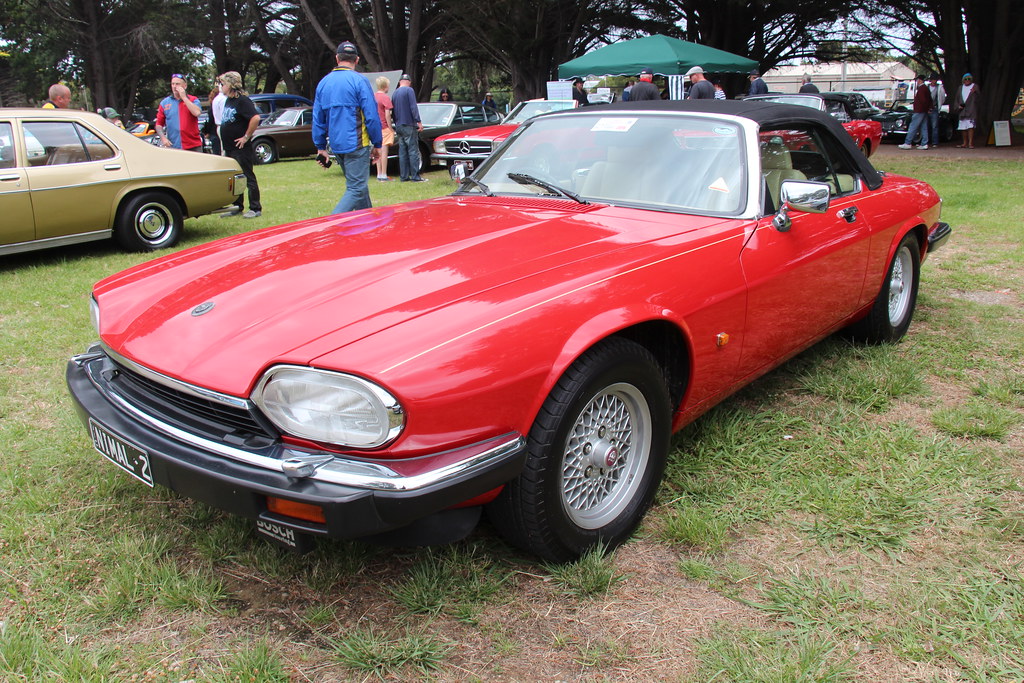
3. **Jaguar XJ-S**The Jaguar XJ-S faced an unenviable task: succeeding the legendary E-Type, a car widely considered one of the most beautiful ever made. Launched in 1975, the XJ-S arrived with immense expectations, promising a luxurious design and the potent performance of a 5.3-liter V12 engine. However, its journey was fraught with challenges from the outset, primarily stemming from its controversial styling.
The XJ-S presented a stark departure from the graceful, flowing lines of its iconic predecessor, leading to considerable criticism for its unconventional appearance. Many purists found its design less appealing than the classic E-Type, struggling to reconcile with its more angular and contemporary aesthetic. This visual contention immediately placed the vehicle at a disadvantage in the highly competitive luxury sports car market.
Adding to its initial struggles, the XJ-S quickly became notorious for persistent reliability issues, a problem that significantly tarnished its reputation. These mechanical shortcomings created a perception of unreliability, which is particularly damaging for a luxury brand like Jaguar, where impeccable quality is expected as a given. These problems further alienated potential buyers and amplified the disappointment for existing owners.
Despite these considerable setbacks, the XJ-S remarkably remained in production until 1996, undergoing various updates and improvements over its lengthy lifespan. While it eventually managed to carve out a niche market and gain a dedicated following, its initial reception was distinctly lukewarm. The XJ-S serves as a compelling classic example of the immense difficulty and challenges inherent in following in the formidable footsteps of an exceptionally beloved and iconic predecessor.
Read more about: The Real Cost of Ownership: 10 Sedans That Become Money Pits After Five Years (And How to Avoid Them)
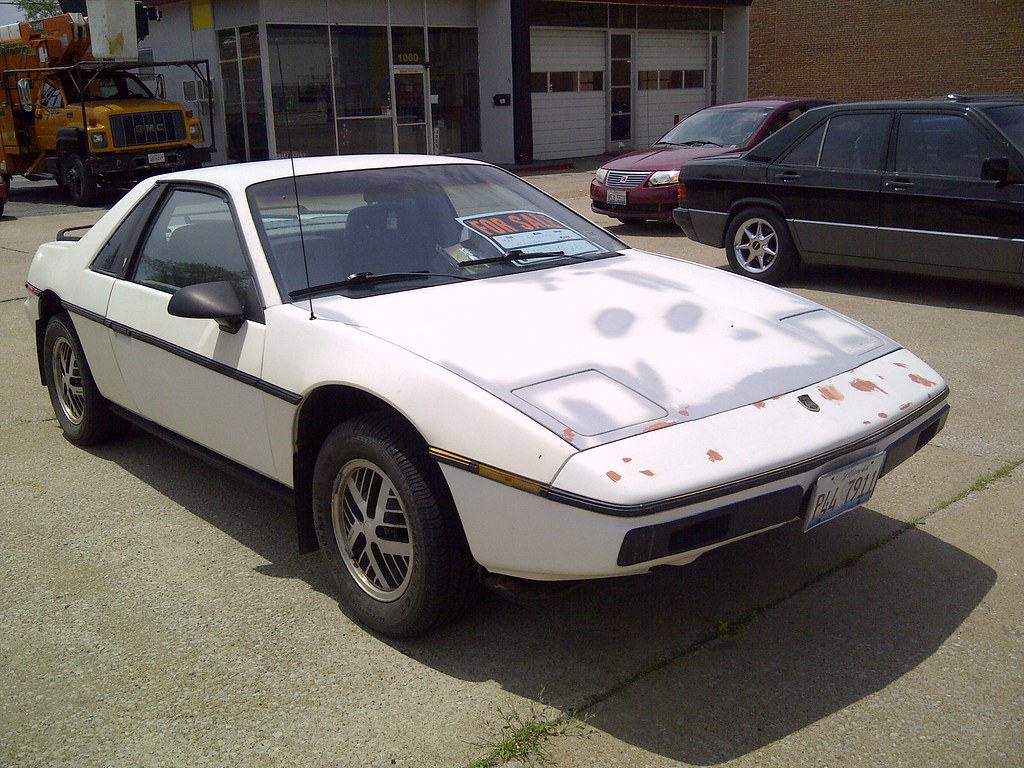
4. **Pontiac Fiero**Introduced in 1984, the Pontiac Fiero was GM’s ambitious foray into creating an affordable, mid-engine sports car for the masses. The concept was innovative: offer the exotic layout typically found in high-end European machines to a broader, budget-conscious American audience. Initially, however, it was marketed primarily as a fuel-efficient commuter, a positioning that immediately set it on a collision course with enthusiasts’ expectations.
This marketing strategy proved to be a significant misstep, as the Fiero’s initial four-cylinder engine disappointed those who anticipated genuine sports car performance. The power output simply couldn’t match the car’s sporty aspirations, leaving many enthusiasts underwhelmed. Compounding this, the car was also plagued by a series of quality issues, most notably a worrying propensity for engine fires, which severely marred its early reputation and instilled a sense of mistrust among potential buyers.
Over its production run, Pontiac did attempt to rectify these shortcomings, introducing performance upgrades, including a much-needed V6 engine option. However, by that point, the damage to the Fiero’s image and market perception had largely been done. The initial quality woes and the disconnect between marketing and actual product capabilities cast a long shadow over the model.
Despite its troubled beginnings, the Fiero eventually developed a cult following, with dedicated enthusiasts often modifying them extensively to unlock their true potential. The Fiero’s story remains a powerful reminder of the critical importance of aligning a vehicle’s marketing narrative with its genuine performance capabilities and ensuring robust quality control from the very beginning of its life cycle.
Car Model Information: 1986 Pontiac Fiero
Name: Pontiac Fiero
Caption: 1988 Fiero Formula
Manufacturer: Pontiac (automobile)
Production: August 1983 – August 16, 1988,370,168 produced
ModelYears: 1984 – 1988
Successor: Pontiac Solstice
Assembly: Pontiac, Michigan
Designer: Hulki Aldikacti,George Milidrag
Class: Sports car
BodyStyle: fastback,notchback
Platform: GM P platform
Layout: Rear mid-engine, rear-wheel-drive layout
Engine: {{cvt,151,CID,L,1,disp=flip,Iron Duke engine#LR8,Inline-four engine
Transmission: Turbo-Hydramatic 125,Manual transmission,Getrag 282 transmission,Isuzu
Wheelbase: 2373 mm
Abbr: on
Length: 4072 mm
Width: 1750 mm
Height: 1191 mm
Weight: 1116 to
Categories: All articles with unsourced statements, Articles with short description, Articles with unsourced statements from February 2012, Articles with unsourced statements from July 2024, Articles with unsourced statements from September 2011
Summary: The Pontiac Fiero is a rear mid-engine, light sports car manufactured and marketed by Pontiac for model years 1984 – 1988. Intended as an economical commuter car with modest performance aspirations, it was Pontiac’s first two-seater since their 1926 to 1938 coupes, and the first mass-produced, rear mid-engine car by any American manufacturer.
In addition to using 4- and 6-cylinder engines to help Pontiac meet America’s ‘CAFE’ average fuel economy requirements, the Fiero’s chassis and structure technology used non-load-bearing, composite body-panels, contributing to the car’s light-weight and its unique selling proposition. Pontiac engineers modified the design over its life to enhance its performance and reposition the two-seater closer to the implications of its sporty configuration.
The Fiero 2M4 (two-seat, mid-engine, four-cylinder) placed on Car and Driver magazine’s Ten Best list for 1984, and was the Official Pace Car of the Indianapolis 500 for 1984.
A total of 370,168 Fieros were manufactured over five years’ production, its mild performance, reliability and safety issues becoming points of criticism. The Fiero was discontinued after annual sales fell steadily.
Get more information about: Pontiac Fiero
Buying a high-performing used car >>>
Brand: Pontiac Model: Fiero
Price: $14,999 Mileage: 68,582 mi.
Read more about: Kings of the Asphalt: Reliving the Glory Days of 1980s Sports Cars and Supercars That Defined a Generation

5. **Triumph Stag**The Triumph Stag debuted in 1970 with an air of sophisticated British luxury, presenting itself as a stylish grand tourer poised to conquer the international market. It boasted an elegant design, characterized by a distinctive T-bar roof and a comfortable, refined interior, all powered by a unique 3.0-liter V8 engine. On paper, it had all the ingredients for success, combining sportiness with open-top touring appeal.
However, the Stag quickly earned a notorious reputation, primarily for its severe mechanical problems, particularly with its engine and cooling system. These deeply embedded design flaws led to frequent and debilitating overheating issues, transforming the Stag into a challenging, often frustrating, and expensive vehicle to own and maintain. The promise of leisurely drives quickly dissolved into a cycle of repairs and breakdowns.
Despite its undoubtedly elegant design and the inherent comfort of its ride, the persistent and widespread reliability issues tragically overshadowed the Stag’s considerable potential. Owners found themselves constantly battling mechanical quirks, which severely impacted the car’s reputation and desirability. The vision of a reliable luxury sports car was consistently undermined by its fundamental engineering weaknesses.
Production continued until 1977, with approximately 25,000 units built during its problematic run. Today, the Stag is primarily appreciated by classic car enthusiasts who are not only aware of its mechanical quirks but also willing to invest significant time and resources into sorting them out. Its initial reception, however, was far from favorable, marking it as a beautiful but deeply flawed classic.
Car Model Information: 1972 Triumph Stag
Sp: uk
Caption: 1974 Triumph Stag (with after-market wheels)
Name: Triumph Stag
Production: 1970–1977,25,939 made
Manufacturer: Triumph Motor Company
Class: Sports tourer
Layout: Front-engine, rear-wheel-drive layout
Length: 173 in
Abbr: on
Width: 63.5 in
Weight: 2800 lb
Height: 49.5 in
Wheelbase: 100 in
Related: Triumph TR250,Triumph 2000
Engine: Triumph V8
Designer: Giovanni Michelotti
Categories: 1970s cars, All Wikipedia articles written in British English, All articles with unsourced statements, Articles with short description, Articles with unsourced statements from July 2018
Summary: The Triumph Stag is a 2+2 sports tourer which was sold between 1970 and 1978 by the British Triumph Motor Company, styled by Italian designer Giovanni Michelotti.
Get more information about: Triumph Stag
Buying a high-performing used car >>>
Brand: Triumph Model: Stag
Price: $8,500 Mileage: 63,159 mi.
Read more about: Beyond the Script: 12 Iconic Moments Where Genuine Joy, Genius Improv, and Happy Accidents Made Movie History
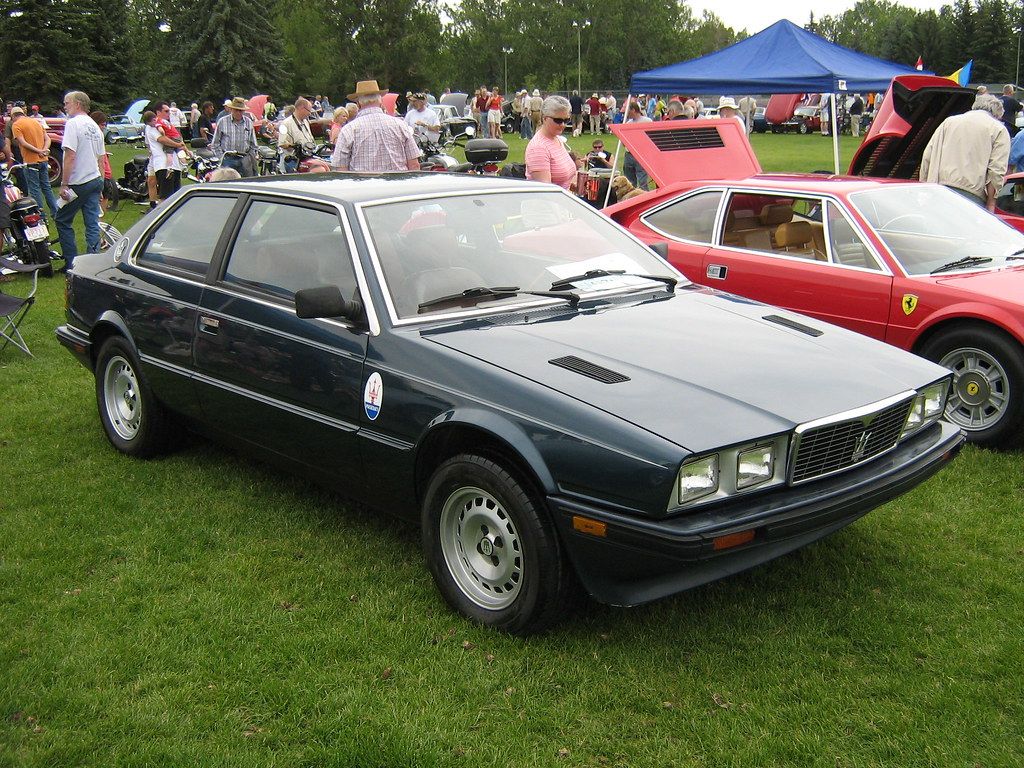
6. **Maserati Biturbo**The Maserati Biturbo, launched in 1981, represented an ambitious strategic shift for the storied Italian marque. It was envisioned as a more accessible and affordable luxury car, designed to directly compete with its well-established German rivals in a burgeoning market segment. The vehicle featured a twin-turbocharged V6 engine, a groundbreaking innovation for its time, which promised impressive performance and a distinctive Maserati driving experience at a relatively lower price point.
Regrettably, the Biturbo’s innovative engine and luxurious aspirations were severely undermined by a pervasive litany of reliability issues. These problems encompassed widespread electrical malfunctions and frequent engine failures, which collectively crippled its reputation almost from the moment it rolled off the production line. The allure of accessible Italian luxury quickly evaporated under the weight of constant mechanical woes.
Despite its considerable performance potential and a sumptuously appointed interior that exuded Italian craftsmanship, the Biturbo struggled immensely to gain a meaningful foothold in the highly competitive luxury car market. Consumers, increasingly discerning, were unwilling to overlook the car’s chronic unreliability, even for the prestige of the Maserati badge. This led to disappointing sales figures and a growing perception of the brand as unreliable.
Production of the Biturbo, in various iterations, continued until 1994, with numerous updates attempting to address its fundamental shortcomings and restore faith in the model. However, the damage had been largely done. The Maserati Biturbo serves as a stark and enduring cautionary example in the automotive industry, powerfully illustrating how critical quality control is in either making or irrevocably breaking a brand’s hard-earned image and market standing, regardless of design or performance ambition.
Car Model Information: 1985 Maserati Biturbo Base
Name: Maserati Biturbo
Caption: Maserati Biturbo E
Manufacturer: Maserati
Production: 1981–1994
Assembly: Modena,Rho, Lombardy
Related: Maserati Shamal,Maserati Ghibli#Ghibli (AM336),Maserati Barchetta,Maserati Quattroporte#Quattroporte IV,Maserati Karif
Designer: Pierangelo Andreani (1977),Marcello Gandini,Zagato
Class: Grand tourer
BodyStyle: 2+2 (car body style),coupé,sedan (car),Cabriolet (automobile)
Layout: Front-engine, rear-wheel-drive layout
Engine: twin-turbocharged,2.5 L twin-turbocharged 90° V6,2.8 L twin-turbocharged 90° V6
Transmission: ZF Friedrichshafen,Automatic transmission,ZF Friedrichshafen
Wheelbase: {{convert,2,514,mm,in,1,abbr=on
Length: {{convert,4,150,mm,in,1,abbr=on
Abbr: on (228)
Width: {{convert,1,710,mm,in,1,abbr=on
Height: {{convert,1,310,mm,in,1,abbr=on
Successor: Maserati Ghibli#Ghibli (AM336),Maserati Quattroporte#Quattroporte IV
Sp: uk
Categories: 1990s cars, All articles needing additional references, All articles with unsourced statements, Articles needing additional references from November 2019, Articles needing additional references from October 2010
Summary: The Maserati Biturbo is a family of executive grand tourers produced by Italian automobile manufacturer Maserati between 1981 and 1994. The original Biturbo was a two-door, four-seater notchback coupé (of somewhat smaller dimensions than the BMW 3 Series of the time) featuring, as the name implies, a two-litre V6 engine with two turbochargers and a luxurious interior.
The car was designed by Pierangelo Andreani, Chief of Centro Stile Maserati up to 1981, somewhat influenced by the design of the then recent Quattroporte III (penned by Italdesign Giugiaro).
All Maserati models introduced from the Biturbo’s inception in 1981, until 1997, were based on variants of the original Biturbo architecture, including the later grand tourers like the Shamal and Ghibli II, as well as the 1994 fourth generation Quattroporte, which used an evolved and slightly stretched (to 2.65 m / 104.3 in wheelbase) Biturbo Saloon platform.
The Barchetta, while of a different layout entirely, used an ultimate version of the Biturbo V6 engine.
Get more information about: Maserati Biturbo
Buying a high-performing used car >>>
Brand: Maserati Model: Biturbo
Price: $13,899 Mileage: 18,319 mi.
Read more about: Buyer’s Remorse: 15 Cars Drivers Wished They Never Bought

7. **Alfa Romeo Alfetta**The Alfa Romeo Alfetta, introduced in 1972, arrived on the automotive scene with a reputation for advanced engineering, promising a sophisticated driving experience. Its innovative design boasted a transaxle layout for optimized weight distribution and a De Dion rear suspension, features typically found in more expensive, high-performance vehicles. These technical specifications underscored Alfa Romeo’s commitment to pushing performance boundaries and offering a genuinely engaging ride for enthusiasts.
However, despite its engineering prowess, the Alfetta soon became notorious for its considerable practical shortcomings, particularly its propensity for rust issues and a general lack of consistent build quality. Owners quickly discovered that the vehicle’s structural integrity could be compromised, leading to significant restoration headaches. Furthermore, its styling, a distinct departure from the more classical Alfa Romeo aesthetics, was a point of contention among purists, with some finding its appearance less appealing than its predecessors.
While the Alfetta’s performance capabilities were respectable for its era, these underlying reliability and aesthetic concerns tragically overshadowed its innovative engineering. The car offered a dynamic driving experience, characteristic of Alfa Romeo, but the ownership experience was often marred by the need for frequent and extensive maintenance. This balance between groundbreaking design and operational reliability proved to be a difficult tightrope walk for the manufacturer.
Production of the Alfetta continued until 1987, eventually being succeeded by the Alfa Romeo 75. Its legacy serves as a compelling reminder of the intricate challenges faced by automotive manufacturers in striking a harmonious balance between visionary innovation and the critical, everyday demands of vehicle reliability and robust build quality, aspects that ultimately dictate a classic’s long-term desirability as a project.
Car Model Information: 2024 Subaru Outback Premium
Name: Alfa Romeo Alfetta
Caption: 1978 Alfa Romeo Alfetta GTV 2.0
Manufacturer: Alfa Romeo
Production: 1972–1987
Assembly: Arese,Rosslyn, Gauteng
BodyStyle: Sedan (automobile)
Layout: Front-engine, rear-wheel-drive layout
Related: Alfa Romeo Giulietta (116),Alfa Romeo Alfa 6,Alfa Romeo 90
Categories: 1980s cars, Alfa Romeo vehicles, Articles with short description, CS1 Dutch-language sources (nl), CS1 French-language sources (fr)
Summary: The Alfa Romeo Alfetta (Type 116) is a front-engine, five-passenger saloon and fastback coupé manufactured and marketed by Italian automaker Alfa Romeo from 1972 to 1987 with a total of over 400,000 units produced during its production run.
The Alfetta was noted for the rear position of its transaxle (clutch and transmission) and its De Dion tube rear suspension — an arrangement designed to optimize handling by balancing front/rear weight distribution, as well as maintaining a low polar moment of inertia and low center of gravity. The interior of Coupé models featured a then unusual central tachometer placement — by itself, directly in front of the driver.
The Alfetta name, which means “little Alfa” in Italian is derived from the nickname of the Alfa Romeo Alfetta (Tipo 159), a successful Formula One car which in its last iteration introduced in 1951, paired a transaxle layout to De Dion tube rear suspension — like its modern namesake.
Get more information about: Alfa Romeo Alfetta
Buying a high-performing used car >>>
Brand: Alfa Romeo Model: Alfetta
Price: $28,398 Mileage: 29,085 mi.
Read more about: Critical Stellantis Recall: Comprehensive Breakdown of 72,000 UK Vehicles Facing Engine Fire Risk
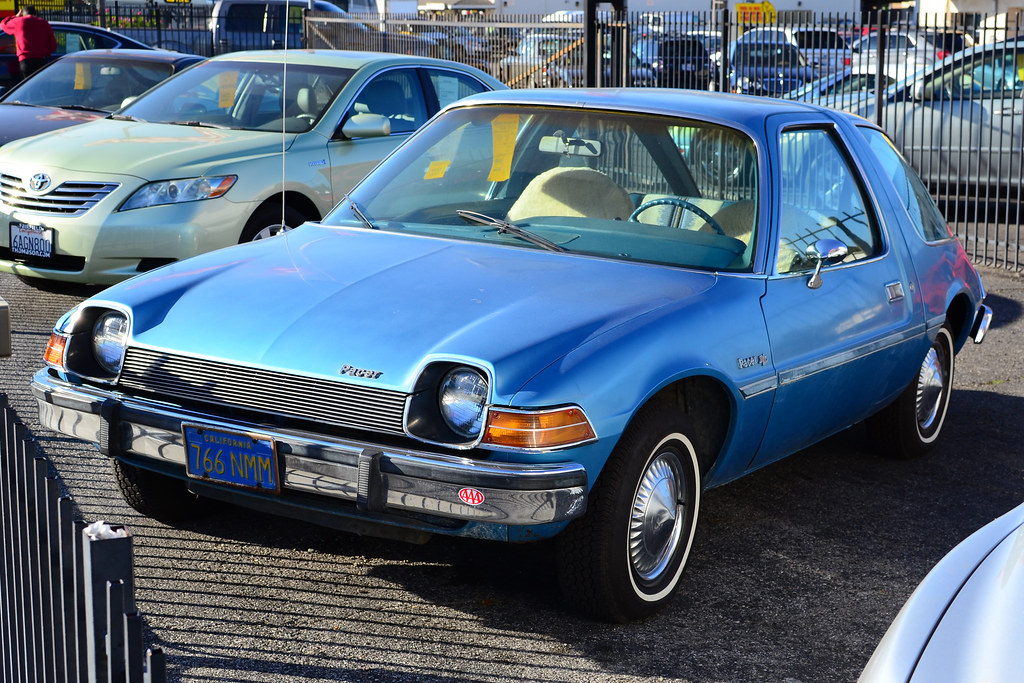
8. **AMC Pacer**From 1975 to 1980, the AMC Pacer made its debut with a distinctive promise: a “wide small car” designed to offer an unprecedented level of interior spaciousness within a compact footprint. Its innovative, almost bubble-like design and large glass area were initially lauded for their uniqueness and for creating an airy, comfortable cabin, a welcome departure from the cramped interiors common in many small cars of the era. The Pacer aimed to redefine urban motoring with its forward-thinking approach to practicality.
Despite these design merits, the Pacer faced significant mechanical and economic hurdles. Its considerable curb weight, combined with a distinct lack of powerful engine options, resulted in rather poor fuel efficiency. This was a critical flaw, as the car was launched during an era defined by oil crises and a pressing demand for economical vehicles, directly contradicting the prevailing economic climate and buyer expectations.
Adding to its struggles, the Pacer’s distinctive appearance, initially a selling point, eventually fell out of favor with the public as automotive tastes evolved. Its unconventional styling became a target for criticism, further diminishing its market appeal. Compounding these aesthetic issues were persistent quality control problems, which undermined owner confidence and the vehicle’s long-term reliability.
Ultimately, the AMC Pacer became an inadvertent symbol of the broader challenges and missteps faced by American automakers during the tumultuous 1970s. While it offered an innovative vision for compact spaciousness, its inability to deliver on performance, economy, and consistent quality left a legacy of unfulfilled potential, making it a challenging and often unrewarding restoration project for enthusiasts today.
Read more about: The ’80s Conundrum: 14 Iconic Automotive Brands That Major Manufacturers Ultimately Let Go
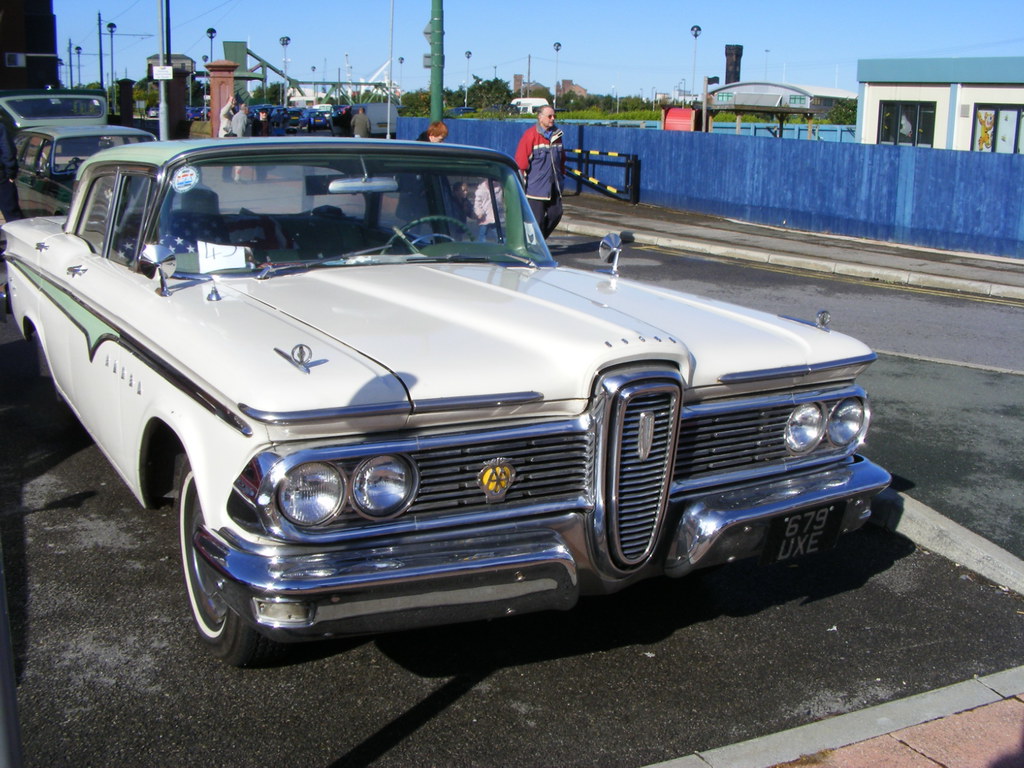
9. **Ford Edsel**The Ford Edsel, launched in 1958, is widely recognized as one of the most famous and instructive failures in the annals of automotive history. Despite an extensive marketing campaign and significant investment from Ford, the vehicle notoriously failed to meet the lofty expectations set for it. Its most immediate challenge was a polarizing design, particularly its controversial vertical grille, which many critics and prospective buyers found aesthetically unpleasing and difficult to reconcile with contemporary automotive trends.
Moreover, the Edsel was introduced into a challenging economic landscape, launching directly into a recession, which severely dampened consumer spending on new vehicles. This unfortunate timing, coupled with a general perception that the car offered little distinct value compared to existing Ford and Mercury models, significantly hindered its sales prospects. Despite its innovative features for the time, such as a futuristic push-button transmission selector, these advancements couldn’t overcome the broader market resistance.
The public’s lukewarm reception led to abysmal sales figures, forcing Ford to discontinue the Edsel after a mere three years of production. Its short, troubled lifespan cemented its status as a cautionary tale in business and product development. The ambitious project served as a powerful illustration of the perils of overhyping a product and misjudging market preferences, demonstrating how even a giant like Ford could stumble spectacularly.
Today, the Edsel has transitioned from a commercial flop to a curious collector’s item, often sought after for its historical significance as an emblem of failure. However, its reputation as a fundamentally flawed and disappointing project endures, reminding enthusiasts that not all historical vehicles are inherently valuable or rewarding for restoration.
Car Model Information: 1959 Edsel Ranger
BirthName: Edsel Bryant Ford
Caption: Ford in 1921
BirthDate: [object Object]
BirthPlace: Detroit, Michigan
DeathDate: [object Object]
DeathPlace: Grosse Pointe Shores, Michigan
Occupation: Automobile executive
Title: Ford Motor Company
Spouse: [object Object]
Parents: Henry Ford,Clara Bryant Ford
Relations: Edsel Ford II
Children: Henry Ford II,Benson Ford,Josephine Ford,William Clay Ford Sr.
Categories: 1893 births, 1943 deaths, 20th-century American businesspeople, All Wikipedia articles written in American English, All articles with dead external links
Summary: Edsel Bryant Ford (November 6, 1893 – May 26, 1943) was an American business executive and philanthropist, who was the only child of pioneering industrialist Henry Ford and his wife, Clara Jane Bryant Ford. He was the president of the Ford Motor Company from 1919 until his death in 1943.
He worked closely with his father, as sole heir to the business, but was keen to develop cars more exciting than the Model T (“Tin Lizzie”), in line with his personal tastes. Even as president, he had trouble persuading his father to allow any departure from this formula. Only a change in market conditions enabled him to develop the more fashionable Model A in 1927. Edsel also founded the Mercury division and was responsible for the Lincoln-Zephyr and Lincoln Continental. He introduced important features, such as hydraulic brakes, and greatly strengthened the company’s overseas production.
Ford was a major art benefactor in Detroit and also financed Admiral Richard Byrd’s polar explorations. He died of stomach cancer aged 49. Henry Ford temporarily reassumed the presidency of Ford Motor Company on Edsel’s death, then Edsel’s eldest son, Henry Ford II, succeeded Henry as president of the company in 1945.
He was also a member of the board of directors of American IG, the American subsidiary of the German chemical conglomerate IG Farben.
Get more information about: Edsel Ford
Buying a high-performing used car >>>
Brand: Ford Model: Edsel
Price: $19,000 Mileage: 21,529 mi.
Read more about: Seriously, Where Did They Go? The Fascinating Vanishing Act of 14 Legendary Auto Brands
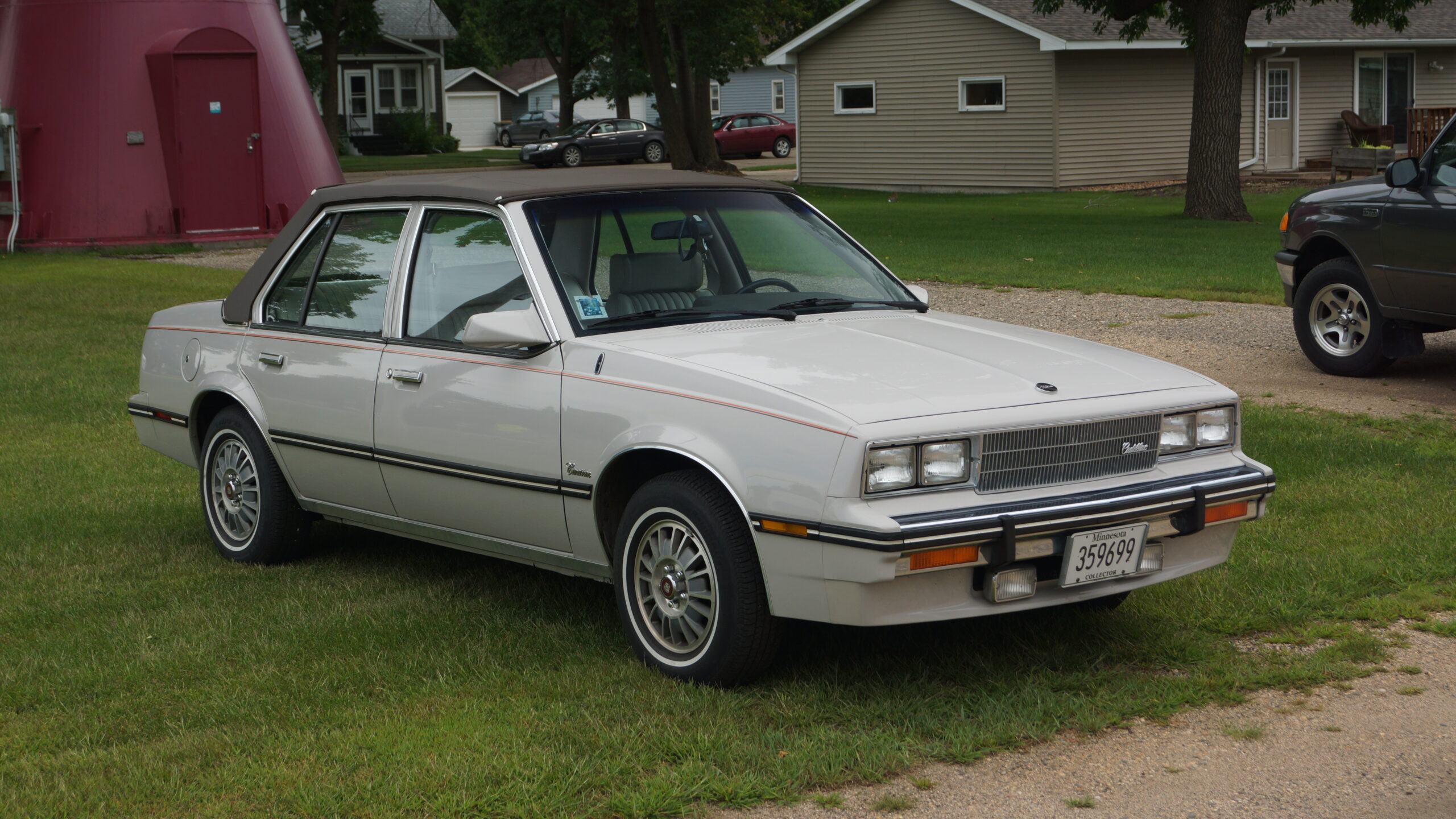
10. **Cadillac Cimarron**When the Cadillac Cimarron debuted in 1982, it represented General Motors’ strategic foray into the burgeoning compact luxury segment, an attempt to compete with European rivals. However, this ambition was quickly and widely met with harsh criticism, as the Cimarron was perceived as little more than a lightly rebadged Chevrolet Cavalier. The minimal differentiation in design, features, and engineering between the two models was glaringly apparent, undermining any claim to luxury distinction.
Crucially, the Cimarron’s limited luxury features and its decidedly underwhelming performance did little to justify its significantly higher price tag compared to its Chevrolet counterpart. The engine options were uninspiring, and the interior, while slightly upgraded, failed to deliver the opulent experience expected of a Cadillac. This lack of genuine premium quality and performance for the price point was a major deterrent for discerning luxury car buyers.
Despite subsequent efforts by Cadillac to improve and refine the model, the damage to the brand’s prestigious reputation was substantial and swift. The Cimarron’s very existence diluted the revered Cadillac nameplate, fostering a perception that the brand was resorting to badge engineering rather than genuine luxury innovation. Production of the Cimarron eventually ceased in 1988, marking a relatively short and troubled run.
Consequently, the Cadillac Cimarron is frequently cited as a definitive cautionary tale within the automotive industry. It powerfully illustrates the severe dangers of brand dilution and the pitfalls of badge engineering, especially within the luxury market, where maintaining an uncompromising standard of quality, performance, and unique identity is paramount to preserving brand integrity and consumer trust.
Read more about: Steer Clear: 14 Vehicles Notorious for Early Breakdowns Before 50,000 Miles
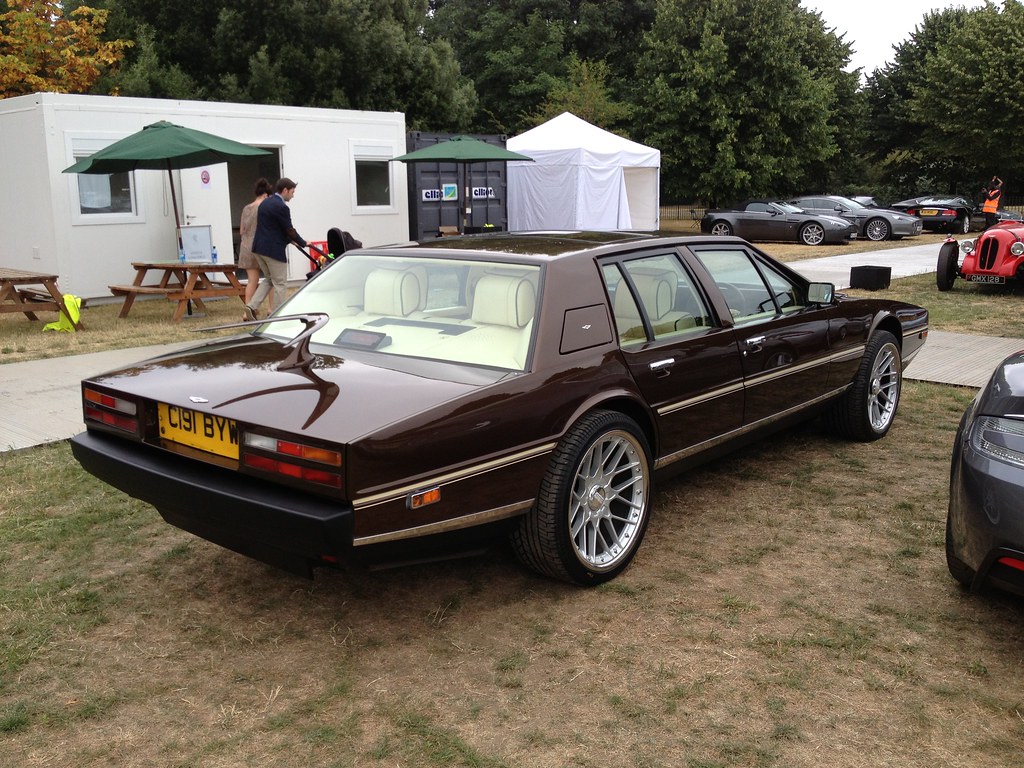
11. **Aston Martin Lagonda**The Aston Martin Lagonda, launched in 1976, was an extraordinarily bold and technologically ambitious vehicle, a stark departure from conventional luxury car design. Its futuristic, wedge-shaped silhouette and groundbreaking advanced digital dashboard promised a significant leap forward in automotive innovation, aiming to blend unparalleled luxury with cutting-edge technology. The Lagonda was designed to captivate with its audacious styling and an interior that felt truly ahead of its time.
The Aston Martin Lagonda, launched in 1976, was an extraordinarily bold and technologically ambitious vehicle, a stark departure from conventional luxury car design. Its futuristic, wedge-shaped silhouette and groundbreaking advanced digital dashboard promised a significant leap forward in automotive innovation, aiming to blend unparalleled luxury with cutting-edge technology. The Lagonda was designed to captivate with its audacious styling and an interior that felt truly ahead of its time.
However, this avant-garde vision was severely hampered by a pervasive array of reliability issues, particularly concerning its notoriously problematic electronics. The complex digital instrumentation, while impressive in concept, proved to be temperamental and prone to frequent malfunctions, transforming the ownership experience into a constant battle with costly and unpredictable repairs. This fundamental instability undermined the car’s luxurious appeal and its high-tech aspirations.
Despite boasting a powerful V8 engine that delivered robust performance and an interior sumptuously appointed with high-quality materials, the Lagonda’s reputation suffered tremendously due to its frequent breakdowns and exceptionally high maintenance costs. The constant need for specialized repairs, especially for its intricate electronic systems, made it an incredibly challenging and financially draining vehicle to own, even for affluent buyers.
Production of the Lagonda, in various series, continued until 1990, with only a few hundred units ever built. The Aston Martin Lagonda remains an enduring example of the critical importance of reliability, even and especially in high-tech, luxurious vehicles. It highlights how innovative features, no matter how visionary, can ultimately become a brand’s Achilles’ heel if not matched by robust engineering and unwavering quality control, making it a truly disappointing project for many.
Car Model Information: 2024 BMW X5 sDrive40i
Caption: Aston Martin Lagonda Series 2
Name: Aston Martin Lagonda
Manufacturer: Aston Martin
Designer: William Towns
Production: 1974–1990,645 produced
Assembly: Newport Pagnell,Buckinghamshire,England
Predecessor: Lagonda Rapide
Successor: Lagonda Taraf
Class: Full-size,luxury car
BodyStyle: sedan (car)
Layout: Front-engine, rear-wheel-drive layout
Engine: cvt,V8 engine
Transmission: Torqueflite,automatic transmission
Wheelbase: 2916 mm
Abbr: on
Length: 5282 mm
Width: 1816 mm
Height: 1302 mm
Categories: 1980s cars, 1990s cars, All Wikipedia articles written in British English, All articles with unsourced statements, Articles with short description
Summary: The Aston Martin Lagonda is a full-size luxury four-door saloon manufactured by British manufacturer Aston Martin between 1974 and 1990. A total of 645 were produced. The name was derived from the Lagonda marque that Aston Martin had purchased in 1947. There are two distinct generations: the original, short-lived 1974 design based on a lengthened Aston Martin V8, and the entirely redesigned, wedge-shaped Series 2 model introduced in 1976.
In 2014, Aston Martin confirmed it would launch a new Lagonda model called the Taraf for the Middle-East market, sold on an invitation-only basis as a successor to this saloon. As of 2022, 113 remain registered in the United Kingdom, though 82 are SORN (unregistered for routine road use).
Get more information about: Aston Martin Lagonda
Buying a high-performing used car >>>
Brand: Aston Martin Model: Lagonda
Price: $37,758 Mileage: 39,959 mi.
Read more about: Kings of the Asphalt: Reliving the Glory Days of 1980s Sports Cars and Supercars That Defined a Generation
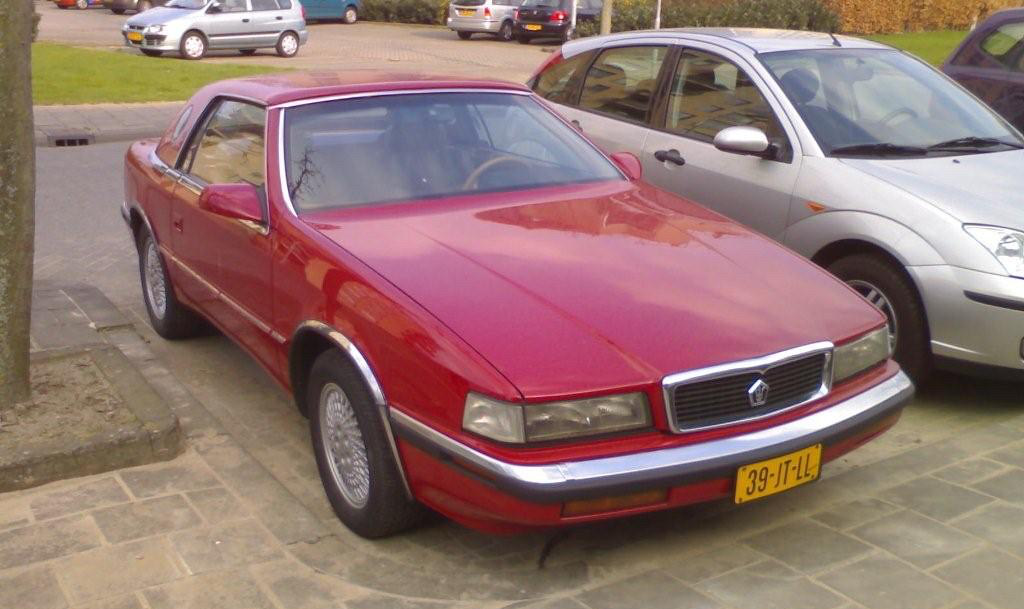
12. **Chrysler TC by Maserati**The Chrysler TC by Maserati, introduced in 1989, emerged as a highly anticipated collaboration between American automotive giant Chrysler and the esteemed Italian marque Maserati. Marketed as a luxury roadster, the vehicle aimed to blend Italian flair with American accessibility, promising an exclusive driving experience. This ambitious joint venture sought to offer discerning buyers a blend of exotic styling and refined performance, leveraging the prestige of both brands.
Regrettably, the TC by Maserati struggled significantly to carve out its own distinct identity in the market. Its most critical flaw was its striking resemblance to, and significant component sharing with, the much more affordable Chrysler LeBaron. This fundamental lack of differentiation, combined with underwhelming performance that did not live up to the Maserati badge, severely hampered its perceived value and exclusivity. Buyers found it difficult to justify the premium price for a car that felt too similar to its common cousin.
Further compounding its woes were its less-than-stellar performance metrics and a comparatively high price point, which collectively hindered its appeal in a competitive luxury segment. The car failed to truly capture the market’s imagination or interest, leading to disappointing sales figures despite the initial hype. Only about 7,300 units were built before production ceased in 1991, marking a swift end to the grand collaboration.
The Chrysler TC by Maserati stands as a classic and poignant example of how brand collaborations, no matter how high-profile, can falter disastrously when the final product lacks a clear, compelling identity and a genuinely competitive edge. It underscores that successful automotive partnerships demand more than just shared badges; they require a vehicle that delivers unique value and a performance standard worthy of its lineage, lessons that remain crucial for any enthusiast considering such a project today.
Car Model Information: 2024 Subaru Outback Premium
Name: Chrysler TC by Maserati
Manufacturer: Maserati,Chrysler (division)
Production: 1988–1990
ModelYears: 1989–1991
Class: Grand tourer
Layout: Front-engine, front-wheel-drive layout
Predecessor: Imperial (automobile)#Sixth generation (1981–1983)
Successor: Chrysler Crossfire
Platform: Chrysler Q platform
BodyStyle: convertible
Engine: Chrysler 2.2 & 2.5 engine#Turbo II,Chrysler 2.2 & 2.5 engine#TC,Mitsubishi 6G7 engine#6G72
Transmission: manual transmission,TorqueFlite,Ultradrive
Weight: 3033 lb
Abbr: on
Wheelbase: 93.3 in
Length: 175.8 in
Width: 68.5 in
Height: 51.9 in
Assembly: Torino,Sparone,Milan
Categories: 1990s cars, All articles with unsourced statements, Articles with short description, Articles with unsourced statements from August 2025, Articles with unsourced statements from March 2021
Summary: The Chrysler TC by Maserati is a two-seat, two-door convertible car jointly developed by Chrysler and Maserati. Introduced at the 1986 Los Angeles Auto Show., the TC was positioned as a grand tourer using a “Q” body on a modified second-generation Chrysler K platform. After two years of development delays, the TC became available in late-1988 and a total of 7,300 units (the minimum required under the contract) were manufactured in Milan, Italy, through 1990. All cars sold as 1991 models were manufactured in 1990.
Get more information about: Chrysler TC by Maserati
Buying a high-performing used car >>>
Brand: Chrysler Model: TC by Maserati
Price: $28,398 Mileage: 29,085 mi.
Read more about: Unmasking the Money Pits: 12 Vehicles and Recalls That Cost You Dearly After Warranty Expires
The journey through these twelve classic cars underscores a critical lesson for any automotive enthusiast: the road to restoration is often fraught with unexpected turns and hidden pitfalls. While the romance of reviving a piece of history is undeniably powerful, the practical realities of engineering missteps, parts scarcity, and market indifference can quickly transform a dream project into a financial and emotional quagmire. As many experts will attest, true appreciation sometimes means admiring these unique machines from a distance, understanding their stories, and acknowledging that some automotive sagas are best left in the annals of history rather than on a lift in your garage. Discerning collectors and hands-on restorers learn to differentiate between a truly rewarding endeavor and a noble, but ultimately unyielding, exercise in perseverance and expense. The wisdom lies not just in knowing which cars to pursue, but equally, which ones to respectfully pass by, preserving both your passion and your pocketbook.


